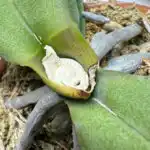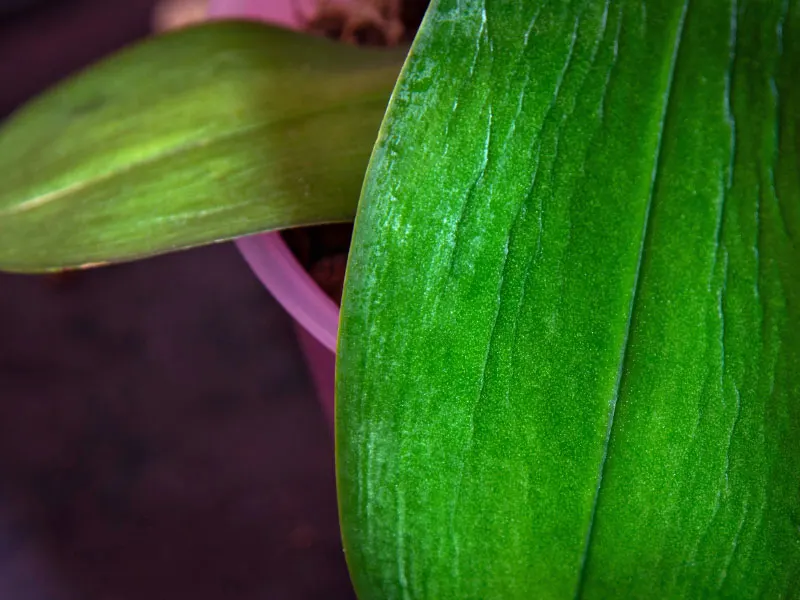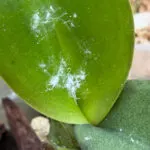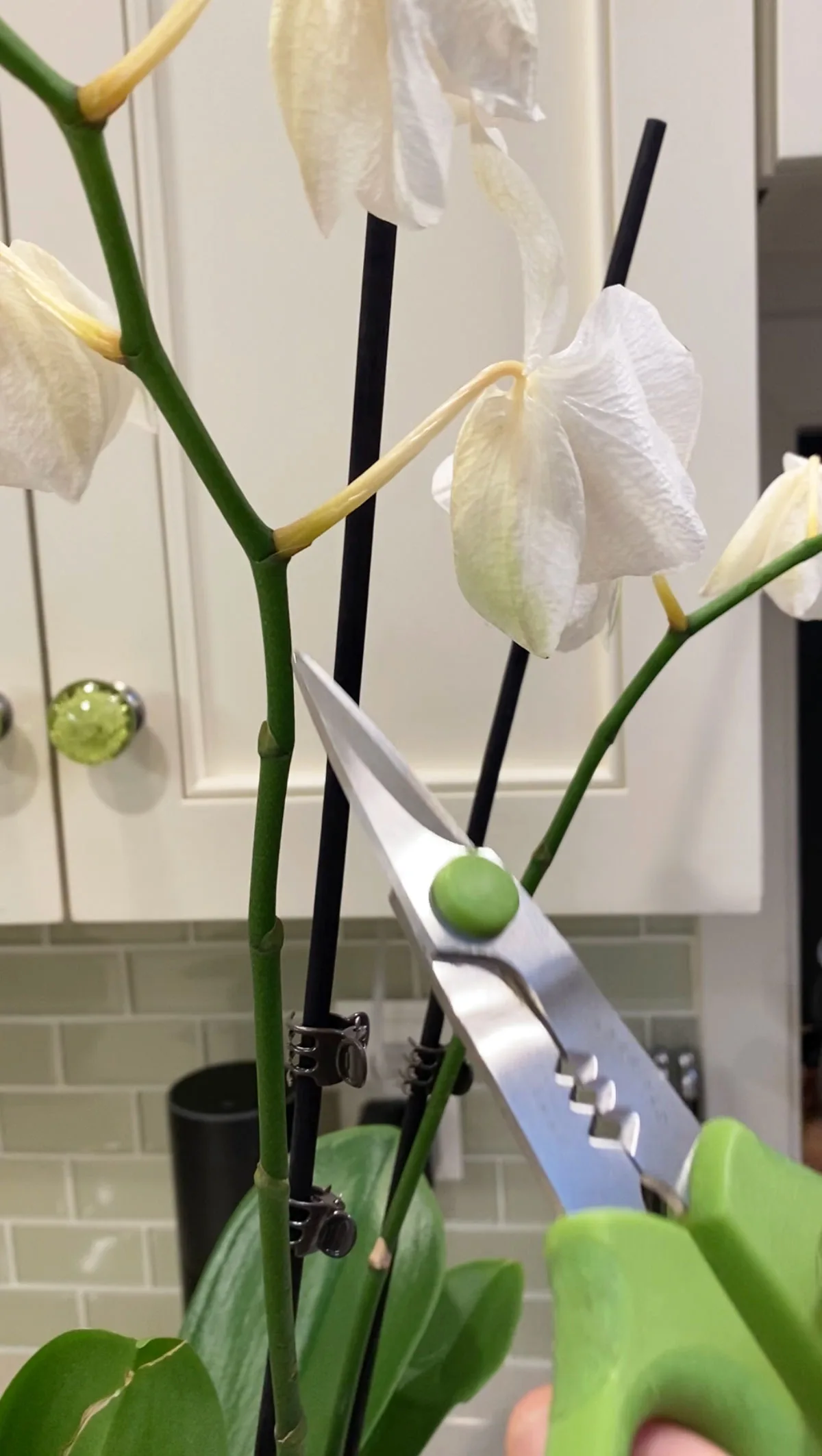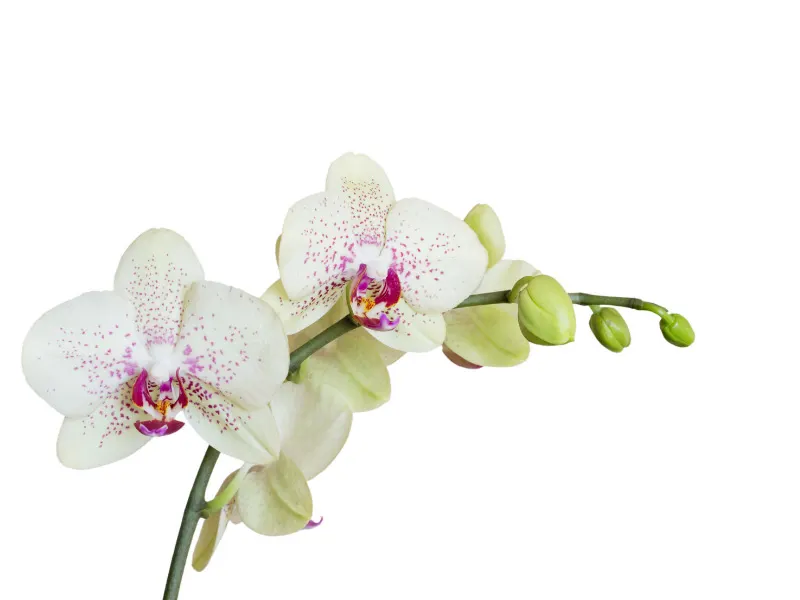Some of the links in this post may be affiliate links.
Do you have yellowing leaves on your Phalaenopsis orchids and don’t know what caused it? This article will get you started on determining the causes (and it doesn’t ALWAYS mean that something is wrong).
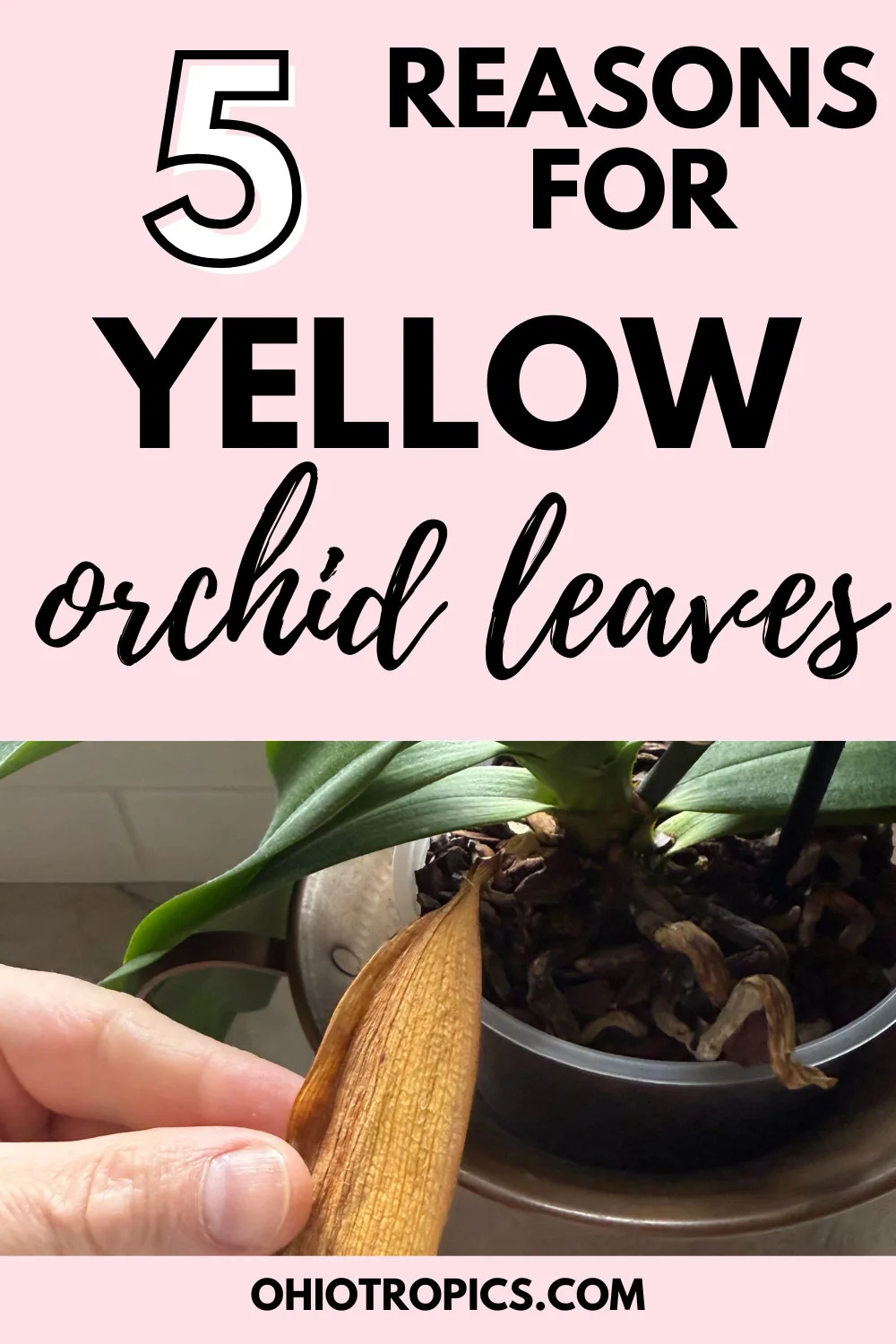
Table of Contents
Reasons Why Phalaenopsis Orchid Leaves Yellow
1. There May Not Be Anything Wrong at All
This is one reason that many people don’t think of.
Let’s say your Phalaenopsis orchid has a yellow leaf at the base of the plant (these are the oldest leaves). Other than the yellow leaf, the rest of the plant looks good with plump roots and firm, green leaves with no wrinkles. In this case, there is usually nothing wrong with your orchid.
It is normal for your plant to lose an older leaf or so every year, especially as your plant is growing new leaves. It is just part of the aging process and no cause for alarm.
Here is an example below. At the time of writing this post, I’ve had this plant for 2 years, and this is the very first leaf to yellow. It is the bottom-most leaf. If you have a similar situation, I recommend leaving the leaf on the plant until it fully dries up.
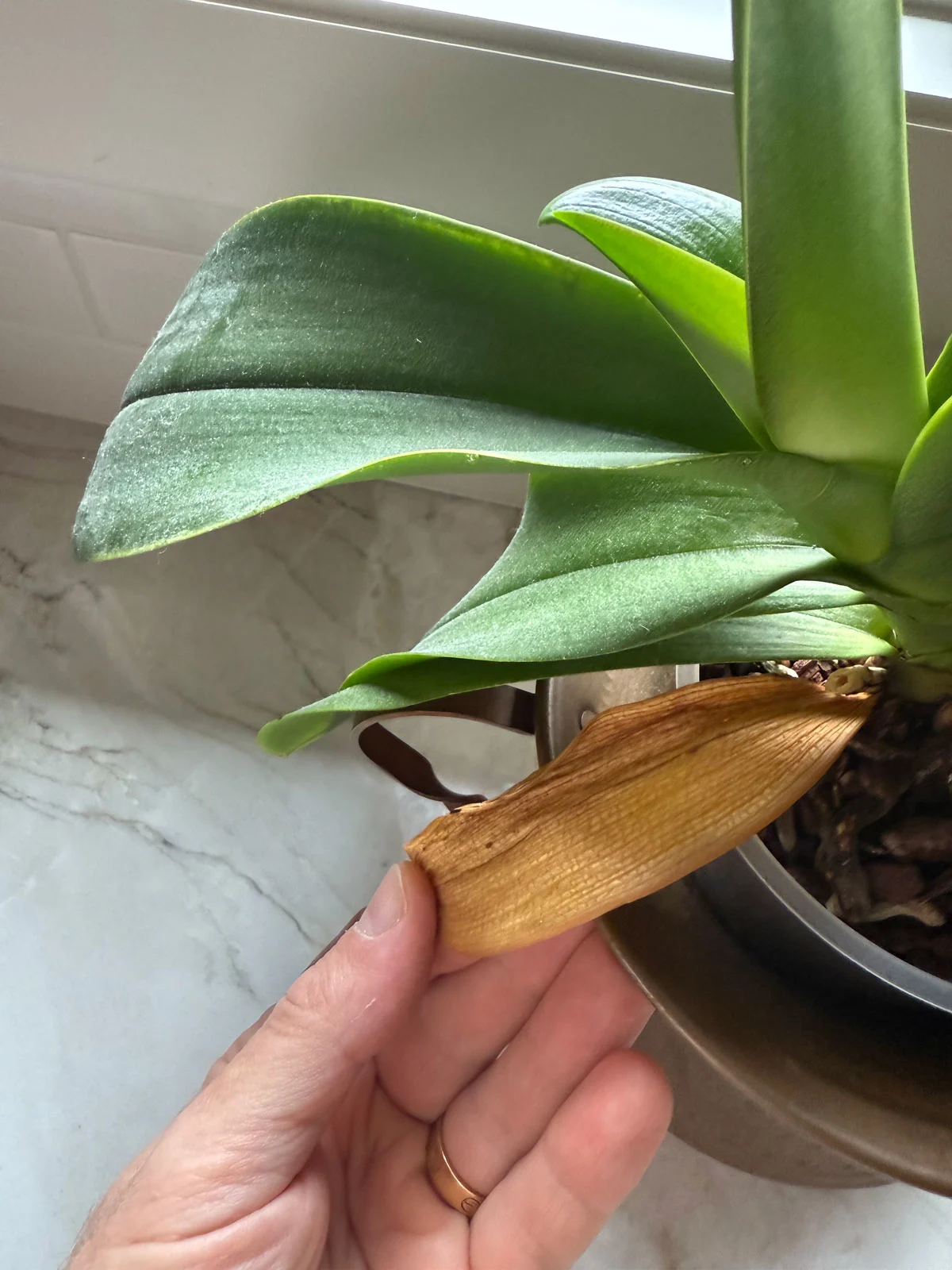
After a few weeks or more, it will continue to dry up and it will pull off on its own with barely any effort at all.
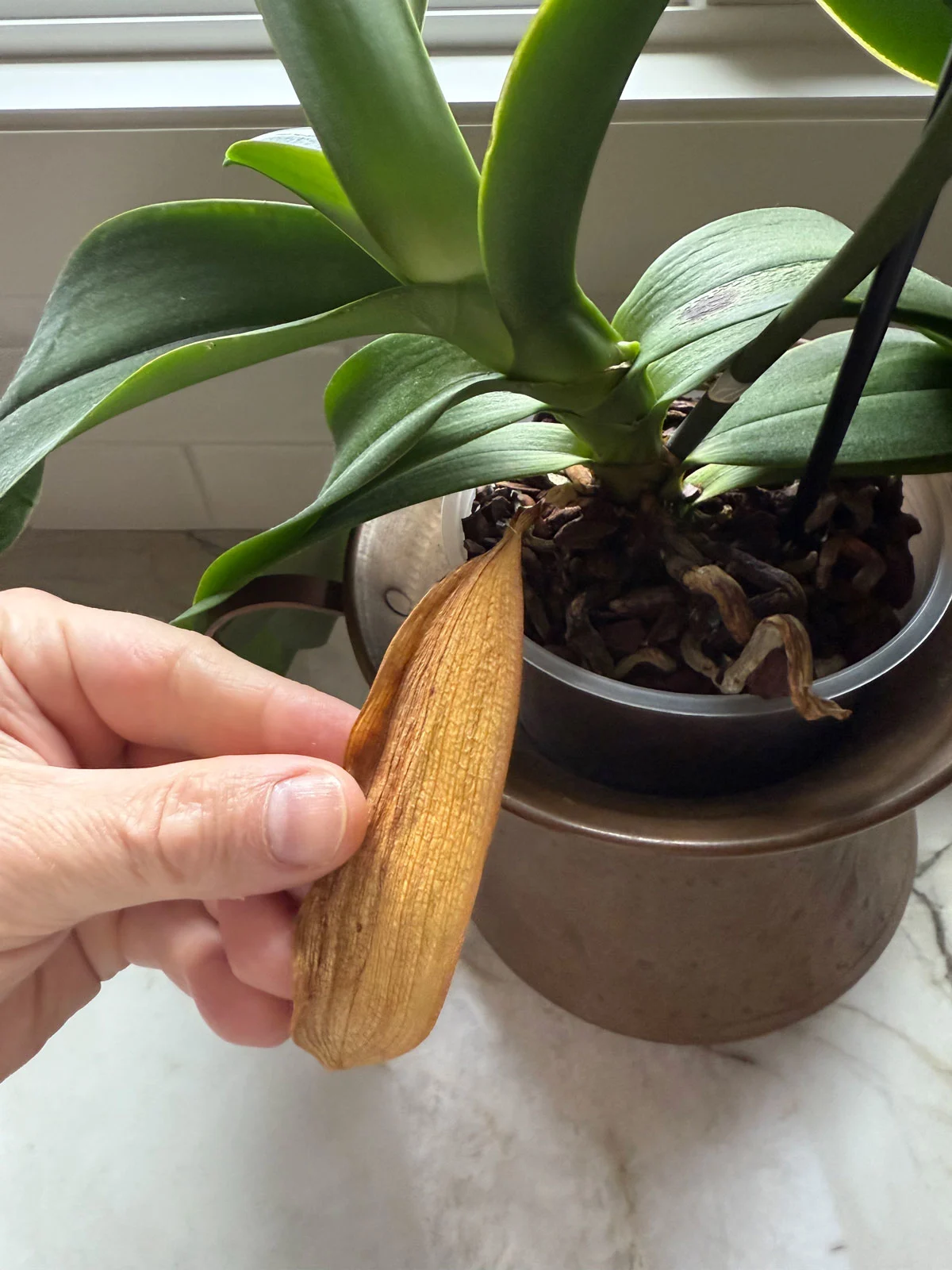
I recommend this for 2 reasons:
- By leaving the leaf on, the plant will redistribute any mobile nutrients from the yellowing leaf to the plant itself. It will benefit the plant to allow the leaf to fully yellow until you are able to easily pull it off effortlessly.
- By leaving the leaf to fall off on its own (or with a really gentle tug), it will allow your plant to essentially “self-clean”. By that time, you should notice a very dry V-shaped area, called the abscission layer.
Take a look at the photo below after I gently pulled off the dried-up leaf. You can see the brown V-shaped area at the base of the plant.
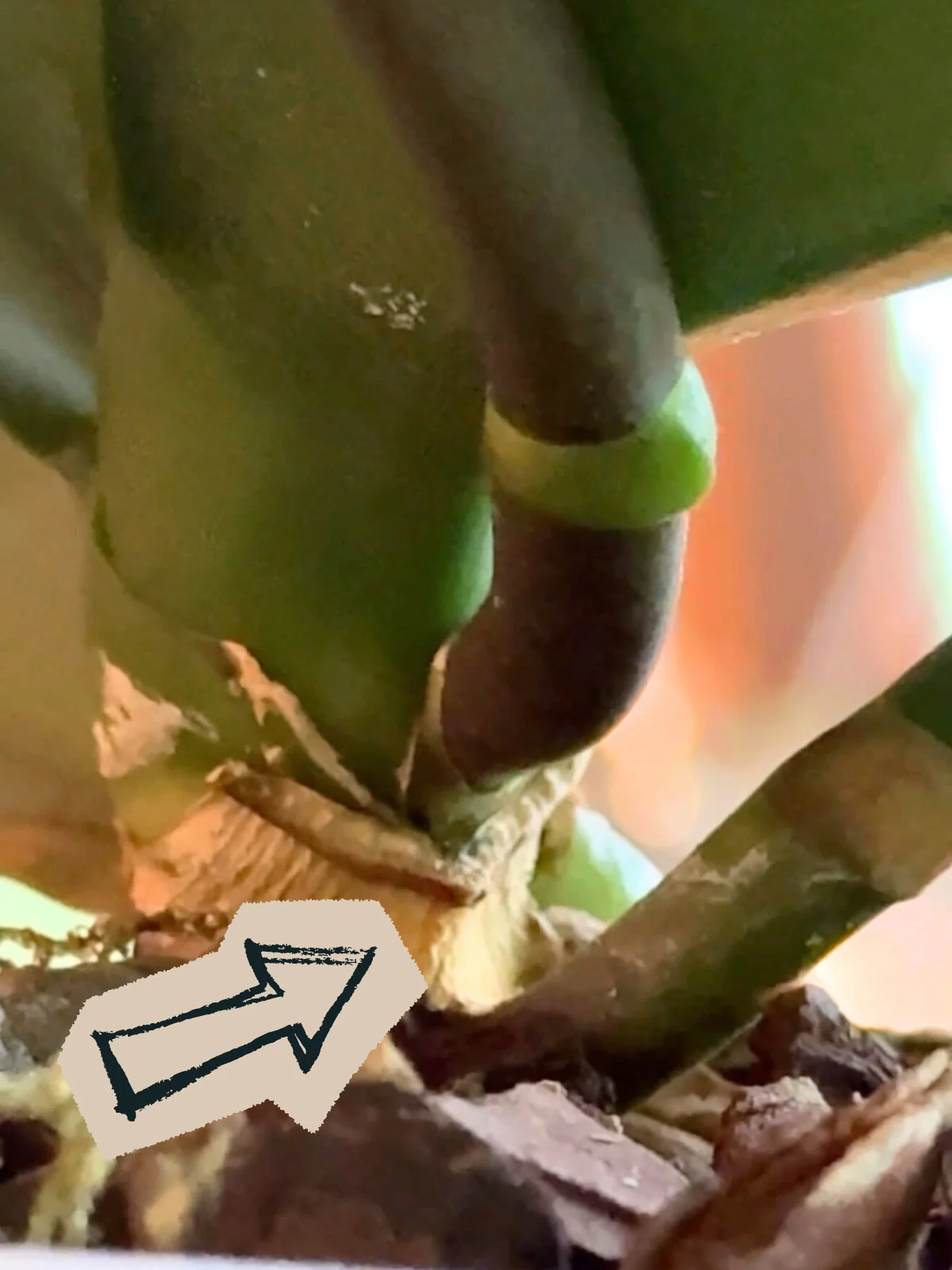
And since it is dried up, it will be closed off to pathogens and protect your orchid from diseases. If you were to just cut off the yellow leaf before drying up on its own, the cut will still have moisture in it, and potentially make it succeptible to disease.
Now, that being said…imbalances in moisture will also cause yellow leaves. If you let your Phalaenopsis get too dry for too long, it will accelerate the lower leaves yellowing. Remember that Phals like to dry out, but they don’t like to STAY completely dry for long!
2. Your Orchid May Be Nutrient Deficient
Sometimes, in the Springtime when Phals start growing new leaves, if you notice that more than one of the lower leaves is yellowing it COULD be an indication that your plant is starved for nutrients.
If you haven’t been fertilizing regularly, this could be why. Check out my blog post on how to fertilize Phalaenopsis orchids.
Even if you have been fertilizing, if your tap water (and/or other water source, or even your fertilizer) is deficient in Magnesium, this can also be a cause. You can contact your local water company to get an analysis on your water.
One way to avoid magnesium deficiencies is to regularly use fertilizers that contain magnesium. You can also supplement your current fertilizer with a “Cal-Mag” fertilizer. Some people even apply Epsom salts (which is magnesium sulfate).
3. Growing Mix Has Broken Down
Over time, bark mixes and sphagnum moss will break down, which is not good for your orchid’s roots. If it has been more than 2-3 years or so since you last repotted, your mix may have started to break down and become more acidic.
Bark mixes will turn soil-like when they have broken down. Sphagnum moss can break down even more quickly, so if you notice a gradual decline, if may be time to repot with fresh medium.
Regular fertilization also speeds up the rate at which your mix breaks down. The accumulation of salts can also cause damage to the plant, so it is important to repot on a regular basis.
4. Fungal or Bacterial Infections
If you see yellowing leaves that have yellow and brown or black areas, it may be due to a bacterial or fungal infection. Bacterial infections usually will progress pretty quickly (sometimes within days), whereas fungal issues can take much longer but will spread unless treated.
Read this article on bacterial issues in orchids from the American Orchid Society for further detail, and here is an article on orchid diseases in general where you can see photos of various diseases.
5. Pests
Yellowing of Phalaenopsis leaves can also occur from pest infestations like scale or mealybugs. With pests, you will usually see uneven yellowing across the leaves.
These are just a few of the reasons, but they are some of the most common reasons that Phalaenopsis orchids will develop yellow leaves.

